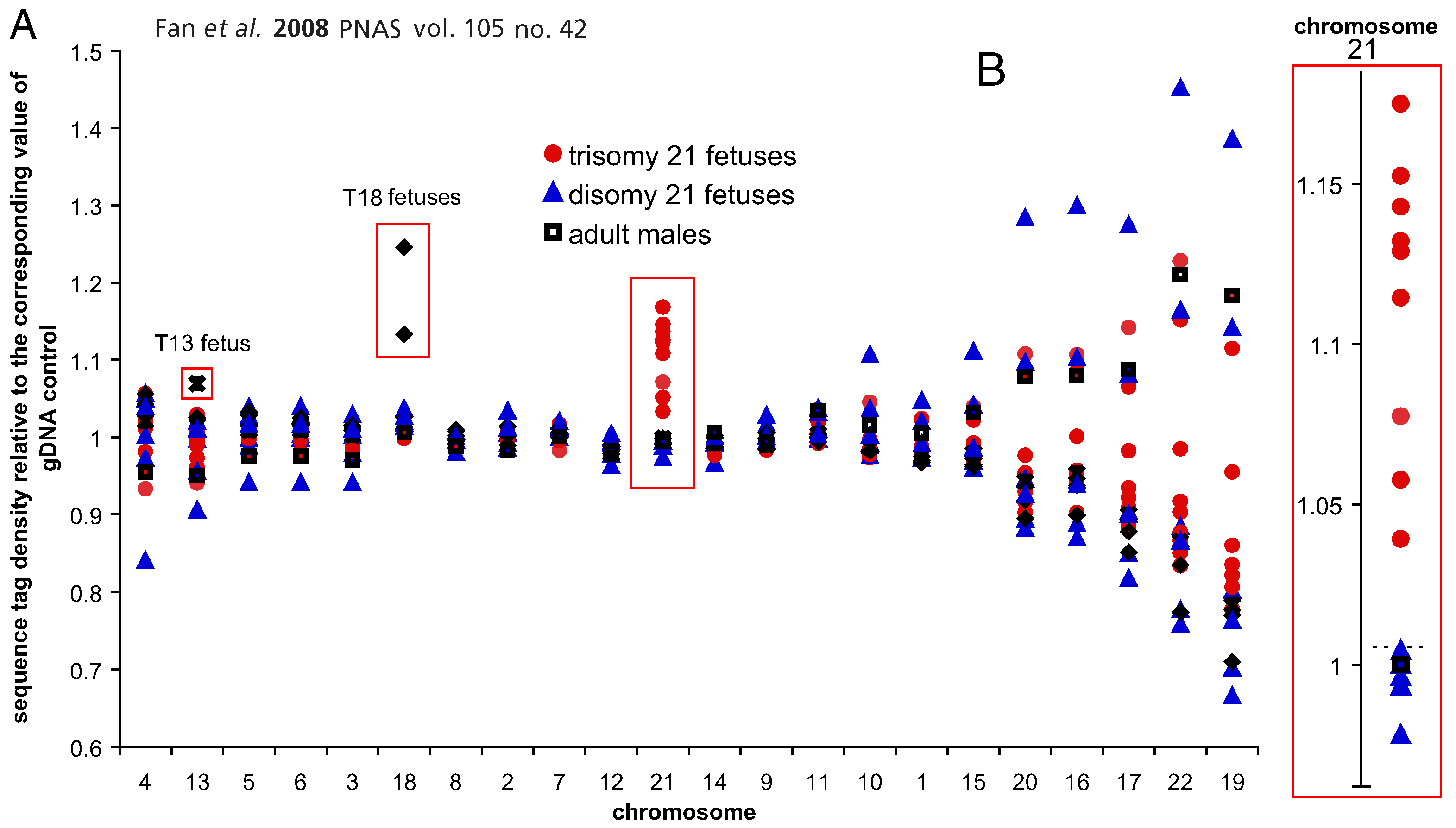
"Shotgun DNA sequencing"
assay for human chromosomal trisomies
DNA
from cells shed by a fetus in utero can be
collected from the circulating blood of the pregnant
women. In a clinical application of Next-Generation
DNA sequencing (NGS) technology, the DNA is
randomly amplified by PCR ("shotgunned")
as millions of short sequences. A 25bp sequence EST "tag"
can be read from one end of each of these fragments ("Expressed
Sequence Tag"). Based on
knowledge of the complete human genome sequence gained from
the Human Genome Project,
each tag can be "assigned"
automatically by computer to a particular
chromosome.
The three most common trisomies in
newborn humans are those of chromosomes 13 (Patau Syndrome), 18
(Edward Syndrome),
and 21 (Down Syndrome). The main graph shows that
the presence of these trisomies in an early fetus increases
the number of tag
assignments that map to that chromosome, as compared
with to an unaffected (disomic) fetus,
because there is an extra chromosome in each case.
For nine pregnancies involving fetuses with Trisomy 21 (red circles), the expanded graph on the right shows
significantly more tag
assignments than do any of the unaffected disomy 21 pregnancies (blue triangles)
or (control, non-pregnant) adult males (black
squares).